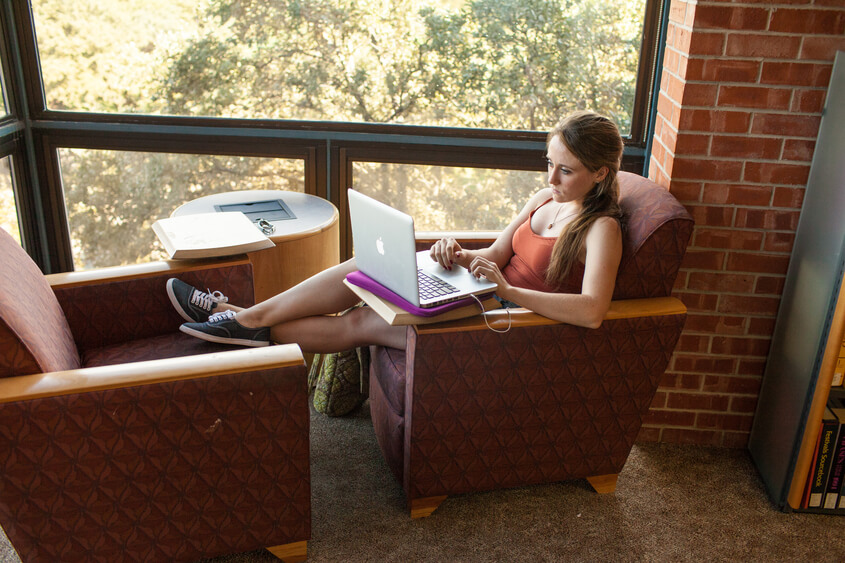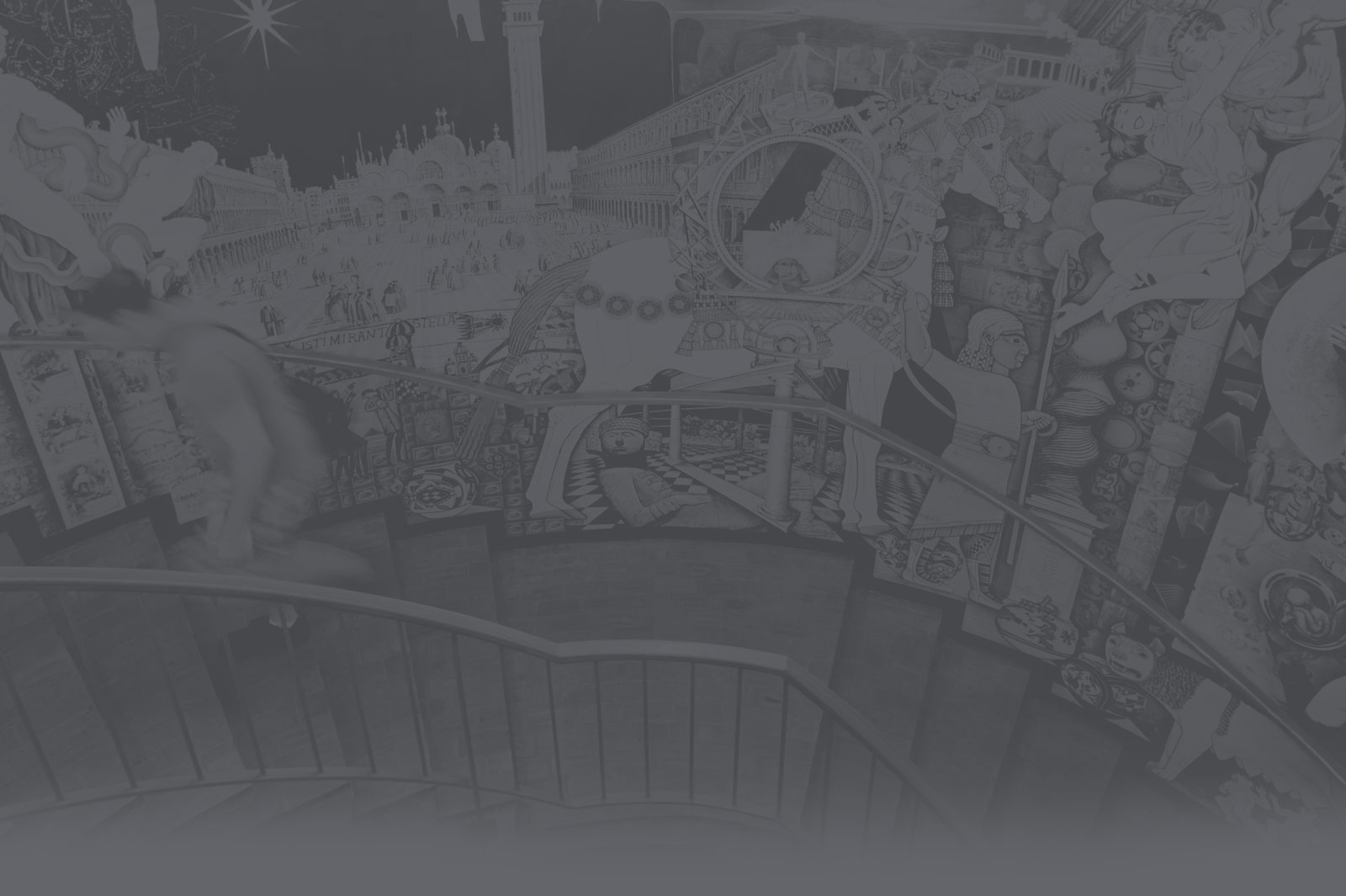This is Coates Library.
 And this is Coates Library in numbers.
And this is Coates Library in numbers.
4 floors
164,307 square feet
317,619 annual visitors
That’s a lot of space, and a lot of people moving through said space. But moving is a verb hiding many other verbs within it. We move through the library, but we also sit at its tables and doze in its chairs. We scatter the raw stuff of research across desktops. We drink and sometimes spill coffee, we write on whiteboards and in bathroom stalls (yes, we know, and we’ve heard that limerick before). In short, we use the library, and the library is yours to use.
But our use stresses library spaces, recording our passage in stains and stray marks. Left unaddressed, the library would quickly resemble a midden heap. Fortunately, we have hardworking housekeepers who perform the everyday care of cleaning. We also have a new employee in Circulation, Jen Marshall, who will walk the library building each morning in search of maintenance, safety, and security issues.
But whose job is it to attend to those aspects that transform space into place?
Who should routinely pierce the veil of familiarity in order to address non-urgent building needs, but ones crucial to the enjoyment and utility of library space?
Here I’m talking about replacing broken furniture, hanging artwork on the walls, making it easier to navigate our collections, and other improvements that enhance the library’s emotional design. Without a building manager, hired and compensated for that purpose, it’s easy to assume that such duties are someone else’s responsibility.
According to a socio-psychological principle known as the diffusion of responsibility, we often assume that someone else will take care of a given task or issue, with predictable results. In other words, if it’s not my responsibility or your responsibility, it’s no one’s responsibility. Daily we walk by inaccurate signage or maps dating back to the Cold War. We sit in wobbly chairs and assume someone else will do something about it. Too often this simply hasn’t been the case.

LBT to the Rescue
But Coates Library now has a team of building soothsayers, a Lorax-like committee to speak for the building, to recommend renovations and advise others on ways to improve the affordances of the library and its spaces, to make them as useful and comfortable as they can be without, say, knocking down walls.
Imaginatively called the Library Building Team (LBT), this standing committee charges its members to regularly inspect library spaces and the uses to which they are put. Already the LBT has made several small but noticeable improvements to the library. For example, we’ve
1. Relocated CDs from the 3rd to 1st floor, creating ample new study space and improved visibility for the Collaborative for Learning and Teaching.
2. Renovated an annex on the first floor, which used to contain maps in large flat files, to create a new quiet-study computer lab.
3. Updated all directories and library signage with a clean, consistent template to improve recognition and legibility.
4. Decluttered all floors, removing numerous pieces of broken and unused furniture, outdated maps, and musty decor.
5. Inspected all floors for damage, remediating numerous stains and instances of graffiti.
6. Worked with Alumni Relations and the library’s Diversity, Equity and Inclusion task force to refresh the lobby, which now includes an improved portrait of our benefactor, Elizabeth Huth Coates, and a framed copy of the library’s diversity and inclusion principles.
7. Installed a bulletin board in Starbucks where students can more easily read and post messages.
8. Selected and purchased new furniture (coming soon!) for the library lobby and for room 103, the library’s classroom on the first floor.
But we’re not ones to rest on our laurels. In future, we plan to revise the Zen Den to make it a more attractive place to study. We’re also preparing to unveil a new study room on the first floor, complete with a whiteboard and a large television for screen-casting purposes. We’ll also continue to refurbish the artwork in Starbucks and on barren library walls to add color, light, and vibrancy to your study environments. But we can’t do our work without your help! Get in touch with Michael Hughes, or any library staff member, if you notice issues the Building Team should address. After all, Coates Library is your library. Help us make it the best place on campus in which to study and learn and sometimes nap.
